This $5 Hack Will Make Your Old Fabric Chair Look Expensive and New!
Do you have an old fabric chair? Maybe it’s a thrift store find? What if you could transform an old fabric chair into an expensive looking “leather” chair, with nothing but $5 worth of paint?
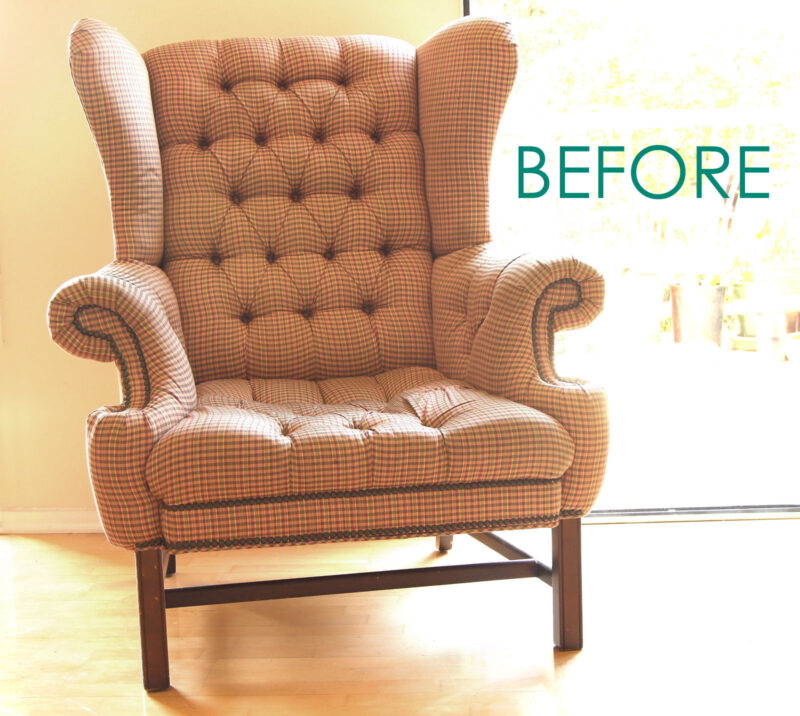
Yes, you can paint kitchen cabinets, walls and doors, and upholstery! Of course I feared all the possible failures of painting upholstered furniture, but lots of research plus the lure of a bright and happy white leather chair helped me overcome all the fears and just do it.
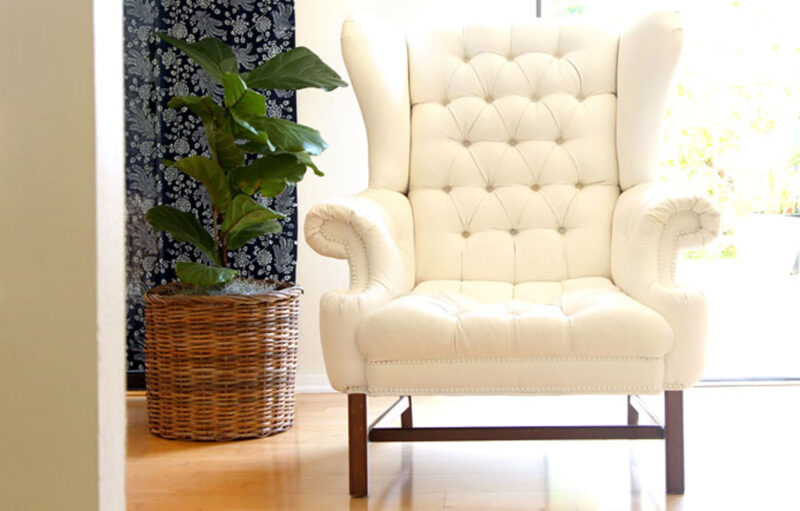
We are so happy with the result! Since then, we have painted a fridge with beautiful results, and transformed an old vanity countertop with paint. Now let’s paint this chair.
Step 1: Choose the right materials.
*Some resources in article are affiliate links. Full disclosure here.
Fabric types: Smooth cotton or poly blends are the most suitable type of fabrics when it comes t painting upholstery.
I highly recommend practicing on a piece of fabric very similar to or the same as your piece ( maybe a matching pillow, a swatch, etc) first. This way you get familiar with the whole process and the feel of the finished fabric. Fabrics with a lot of texture such as velvet or thick woven fabrics are much more challenging to paint over.
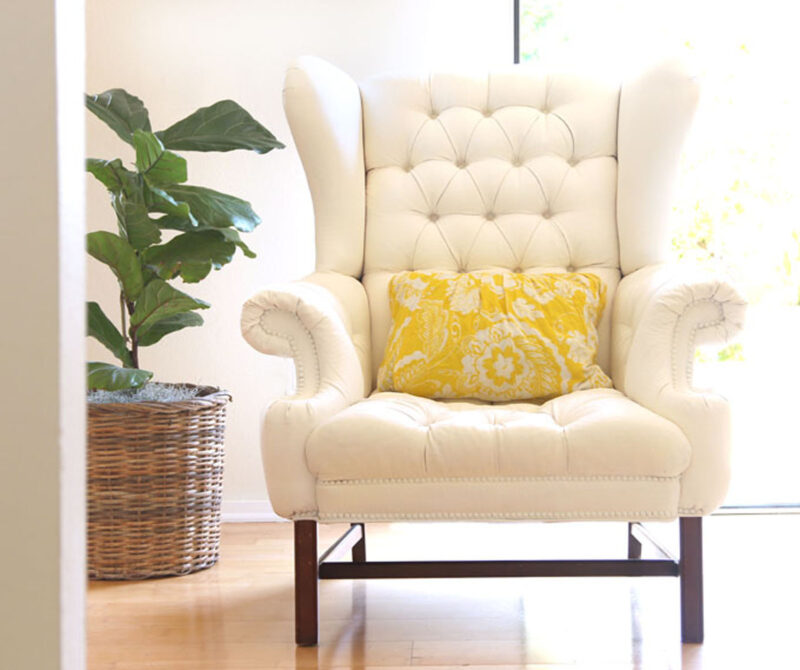
Choosing paints: After some tests, I chose a soft shade of white acrylic latex paint in satin finish.
Step 2: Prepare your piece for the first coat of paint.
Vacuum the nooks and crannies. Wipe off any dust on the surface of the fabric.
Spot clean stains so they don’t dissolve in the paint and discolor the area. Just do the best you can, no need to be perfect.
Tape the legs and any parts you want to protect from the paint.
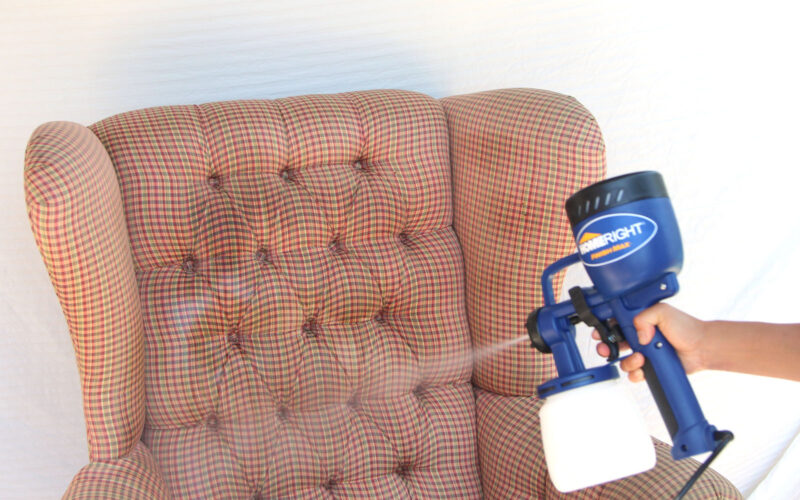
Spray water on your fabric chair or sofa until the fabric is damp. This will help the first coat of paint to soak into the fabric. You can use a spray bottle or a paint sprayer (more about that in next step).
Step 3: Apply the first coat of paint.
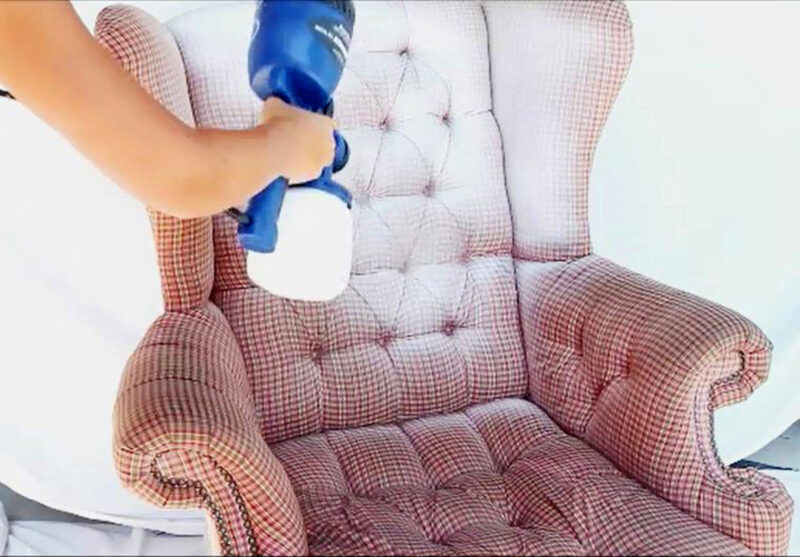
While the fabric is still damp, apply the first coat of paint. One of the keys to keeping the fabric soft is to use diluted paint, and paint multiple coats.
Dilute the acrylic latex paint in the following ratio: about 3 cups of paint to 2 cups of water to a consistency similar to crepe or pancake batter.
Use a brush or a paint sprayer to apply the first coat of paint while the fabric is still damp.
Use a paint brush to reach the areas where the fabric folds. After applying the first coat of paint, take a piece of rag or sponge and rub the painted surface to help the paint soak into the fabric. You only have to do this for the first coat.
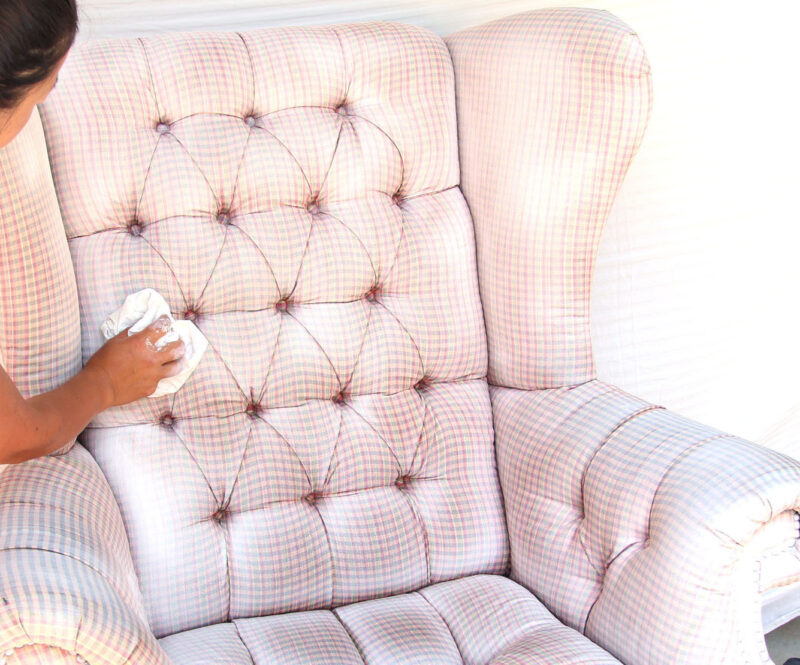
There will be areas where you cannot completely cover with paint, for example: where the seat cushion turns vertically to meet the side arms. Just reach down and paint these areas with a paint brush so when no one is sitting on the chair, you won’t see the original fabric. Don’t use too much paint or these areas could stick.
Step 4: Sand the first coat of paint.
Let the first coat dry. You might think your piece is looking awful right now. Don’t panic! It will look significantly better with each coat of paint!
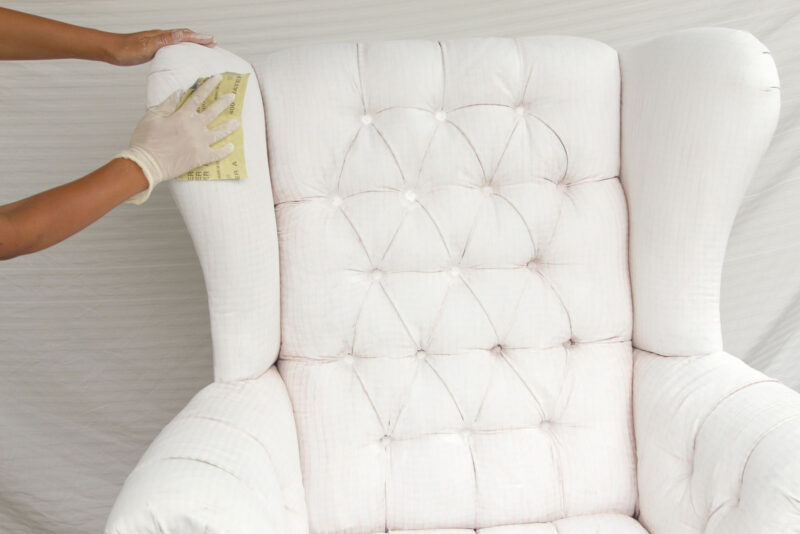
Take a piece of 320 grit to 400 grit extra fine sand paper, and sand the painted areas.
Sanding between each coat with extra fine sand paper is another key to keeping the fabric soft to the touch. You will notice such a big difference. The fabric will feel like synthetic leather instead of dry paint!
Step 5: Repeat with the painting and sanding process.
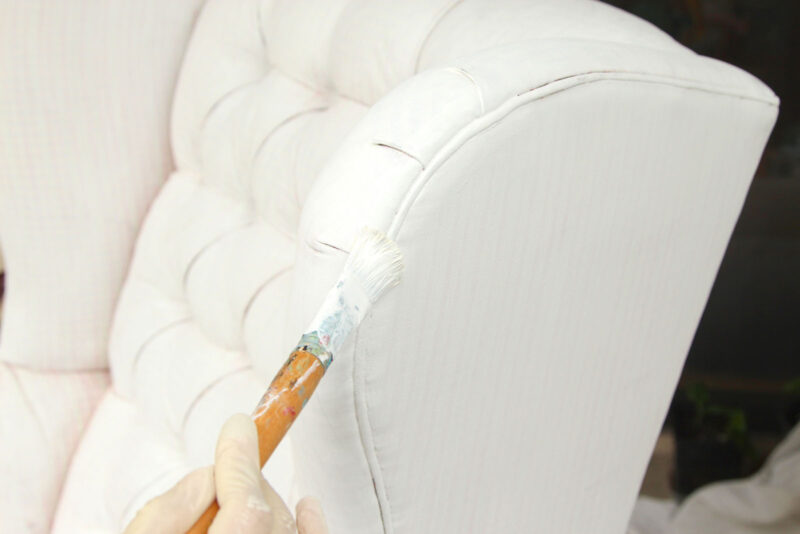
Apply the second coat of paint. Let dry. Sand the painted areas.
Repeat this process with more layers of paint until you are happy with the result. I did a total of four coats of paint. It took a couple of days because I had to wait for the paint to dry between layers.
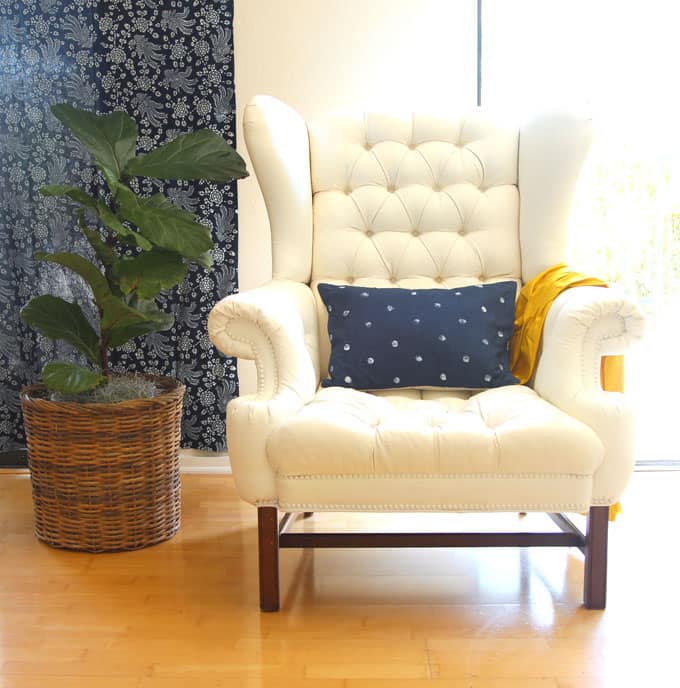
What a difference it makes! Now this entire room feels so much brighter! If you love that indigo fabric pillow, here’s a tutorial on how to make your own indigo tie dye fabrics and pillow covers.

Helpful tips:
- First determine if your upholstered chair or sofa is suitable for painting. Avoid fabrics with thick textures. Do some tests on scrap fabrics or smaller pieces.
- Secrets to keeping the fabric soft to the touch: use diluted paint, and paint multiple coats. Sand with extra fine sand paper between coats.
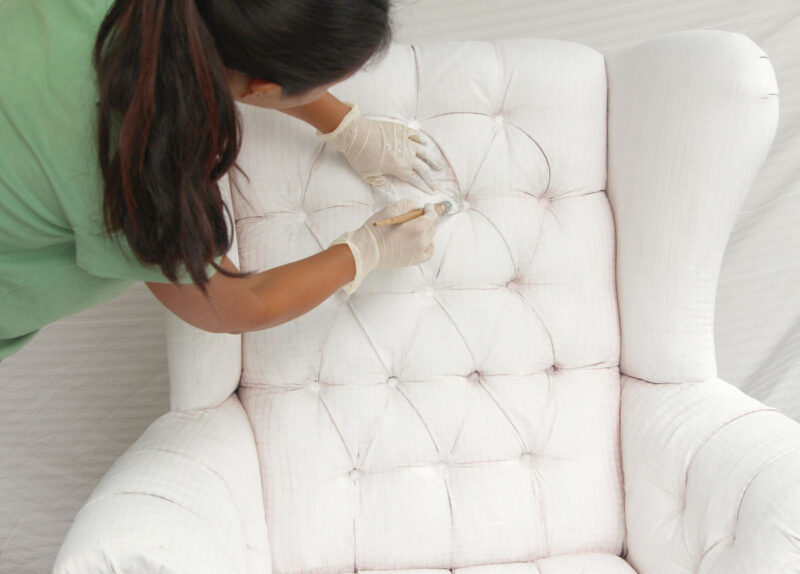
The pros and cons of painting upholstery vs other methods
Pros:
Painting upholstery is much faster and easier than reupholstering or making slipcovers. It is also easier to keep clean because paint is waterproof: just wipe off any dirty areas with a damp cloth.
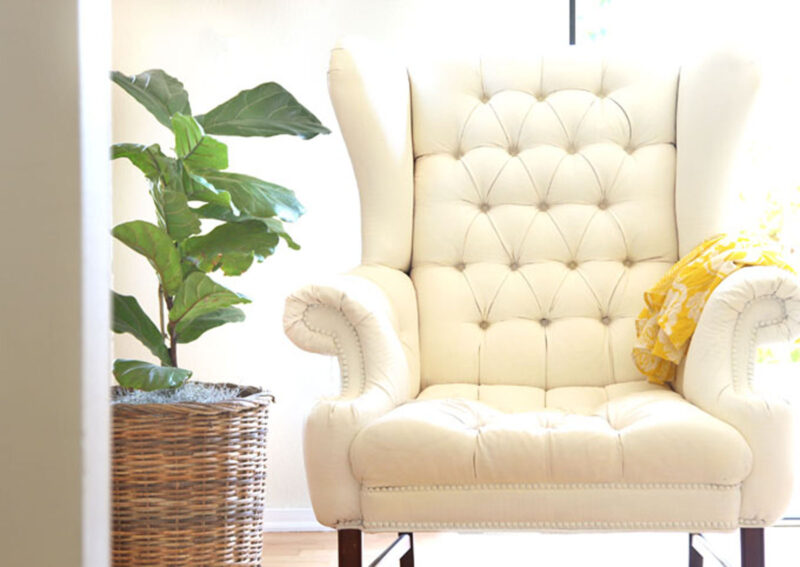
Cons:
Not all fabrics are suitable for painting. In those cases, reupholstering or making slipcovers are the only options to refresh a piece. Same applies if the fabric surface is damaged. Painted upholstery feels like synthetic leather. If you prefer softer fabric seats to leather seats, consider reupholstering or making slipcovers instead.
